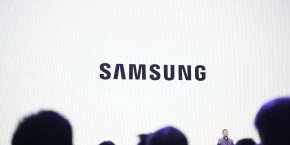

Android Marshmallow didn’t come with many obvious user interface changes when it launched last year, but it did come with several baked-in core features. One of them was the ability to adopt a MicroSD card as internal storage. This lets you use an external card to store apps and app data. In my opinion, it’s one of the best features of Marshmallow, especially if you have a low to mid-range phone with limited storage, like the Moto X Play.
Samsung and LG, however, have decided it’s in everyone’s best interests if it isn’t in their latest flagships, the Galaxy S7 and LG G5, which both launched this week at MWC 2016…
Android Central tried the feature in the LG G5 a few days ago, and Ars Technica reached out to Samsung about its own plans for the device. They got the following response:
Samsung decided not to use the Android Marshmallow “adoptable storage” model. We believe that our users want a microSD card to transfer files between their phone and other devices (laptop, tablet, etc), especially the photos and videos they shoot with the camera.
With adoptable storage, first of all the card may be erased the first time it is inserted into the device. This behavior may be unexpected by many users and we don’t want our users to lose their files. Second, once Marshmallow starts using a card for adoptable storage, it cannot be read by other devices, so it loses this ability to be used for file transfer. Adoptable Storage is also primarily targeted towards emerging markets where devices with only 4-8GB of onboard storage are common. We think that our model of using microSD for mass storage is more in-line with our owner’s desires and expectations for how microSD should behave.
I’m never shy to criticize Samsung on its plans to include, or remove, certain features. This time however, the argument is sound. For most people, I think 32GB is enough for storing apps and data. Customers can still opt to save all their media (music/photos/video) to the MicroSD card, and can more easily share it between devices by swapping out the card.
Once an SD card is formatted as adoptable storage, switching it between devices on the fly has its issues, in that it isn’t recognized. What’s more, if the MicroSD card isn’t fast enough, you can run in to severe performance problems. Sammy’s also right that adoptable storage is more beneficial to cheaper devices with limited storage (Android One phones, for example).
If you have a device with Android Marshmallow and an SD card slot and want to give it a try anyway, check out my how-to video on how to adopt a MicroSD as internal storage. Just make sure you have a fast enough MicroSD card beforehand:
[youtube=https://www.youtube.com/watch?v=Jhz6Ox9cX3A]
FTC: We use income earning auto affiliate links. More.




Comments